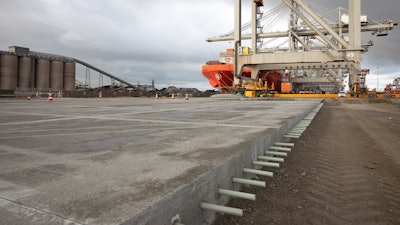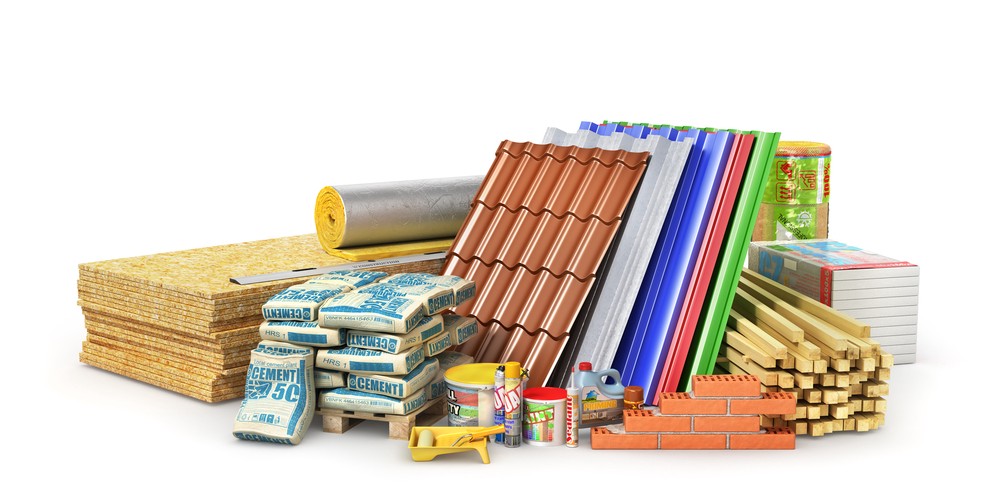Composites: The Future of Lasting Building Materials
Composites: The Future of Lasting Building Materials
Blog Article
Opening the Ecological Benefits of Recycled Composites in Building And Construction and Design
In the world of building and layout, the application of recycled composites holds considerable pledge for enhancing sustainability practices and reducing ecological effect (composites). By integrating these cutting-edge products, there is a possible to deal with important problems such as waste minimization, energy conservation, and a decrease in carbon footprint. The change towards a much more lasting future in these markets rests on unlocking the complete potential of recycled composites. This discussion will discover the diverse advantages and challenges connected with incorporating recycled composites into construction and design, supplying a glimpse right into the transformative possibilities that exist ahead.

Environmental Effect Reduction
The reduction of ecological effect via making use of recycled composites in building and design plays an essential function in lasting practices. By including recycled compounds into building products, the construction sector can dramatically lower its carbon impact and add to a more environmentally friendly future. These sustainable materials, made from repurposed plastics, wood fibers, or various other recycled elements, offer a sensible alternative to typical building products without jeopardizing on high quality or longevity.
Recycled compounds assist divert waste from land fills and decrease the need for removing resources, hence saving all-natural resources. In addition, the production process of these compounds usually eats much less power and produces less greenhouse gases compared to producing virgin materials (composites). This shift towards making use of recycled compounds not only lessens ecological injury however additionally advertises a round economic situation by urging the reuse of materials that would or else be thrown out
Waste Minimization
With a concentrate on minimizing waste in construction and design, the combination of recycled compounds uses a sustainable solution to minimize environmental impact. Waste minimization is an essential aspect of sustainable practices, and making use of recycled composites offers a chance to attain this goal properly. By using products that have currently served their preliminary purpose, such as recycled plastics or redeemed timber fibers, the building and design markets can significantly lower the amount of waste created and sent to land fills.
Recycled compounds have the prospective to divert substantial amounts of waste from typical disposal approaches, adding to a more circular economic climate where sources are used successfully. In addition, the production process of recycled composites typically eats much less energy and creates fewer emissions compared to virgin materials, even more decreasing the environmental footprint of building and style projects.
Carrying out waste reduction approaches through the consolidation of recycled composites not just aids in preserving natural sources however also advertises an extra lasting method to structure and making for a greener future.
Power Preservation
Incorporating recycled composites not only minimizes waste in building and construction and design however likewise plays an essential function in boosting power conservation practices within the sector. The use of recycled composites in construction can dramatically add to power conservation with various methods. By promoting the usage of recycled compounds in building and construction and layout, the sector can make significant strides in the direction of accomplishing energy performance and decreasing its carbon footprint, ultimately adding to a much more sustainable developed setting.
Carbon Footprint Decrease
Enhancing sustainability techniques with the use of recycled compounds in building and design substantially lowers the carbon impact of the market. By including recycled materials into the production of compounds, the demand for virgin resources reduces, leading to lower power consumption and greenhouse gas exhausts connected with traditional production procedures. This reduction in carbon footprint is vital in combating climate modification and promoting a much more eco-friendly strategy to construction and layout.
The carbon footprint decrease achieved with the fostering of recycled compounds straightens with the global push in the direction of sustainable techniques and the decrease of industrial exhausts. Ultimately, by focusing on the combination of recycled compounds, the visite site market can make significant strides in lowering its carbon footprint and adding to a much more lasting future.
Lasting Future
The assimilation of recycled composites in construction and design not just addresses immediate environmental worries but additionally lays a strong foundation for a lasting future in the sector. By incorporating recycled composites right into building materials and products, the building and construction and style industries can significantly minimize their dependence on virgin sources, bring about a more round economic situation. This change in the direction of sustainability is important for mitigating the ecological influence of standard construction methods, which usually lead to my review here high levels of waste generation and resource deficiency.

Final Thought
Finally, recycled compounds provide significant ecological advantages in construction and design by minimizing environmental effect, reducing waste, preserving power, lowering carbon footprint, and advertising a lasting future. Embracing using recycled compounds can add to a much more environmentally-friendly technique to building and style, inevitably bring about a much more lasting and greener future for all.
The reduction of environmental effect through the use of recycled compounds in building and construction and layout plays a crucial function in lasting methods.With an emphasis on reducing waste in building and construction and style, the assimilation of recycled composites offers a sustainable solution to decrease ecological effect. By advertising the use of recycled composites in building and construction and layout, the market can make considerable strides towards achieving energy performance and minimizing its carbon footprint, inevitably adding to a much more sustainable constructed environment.

Report this page